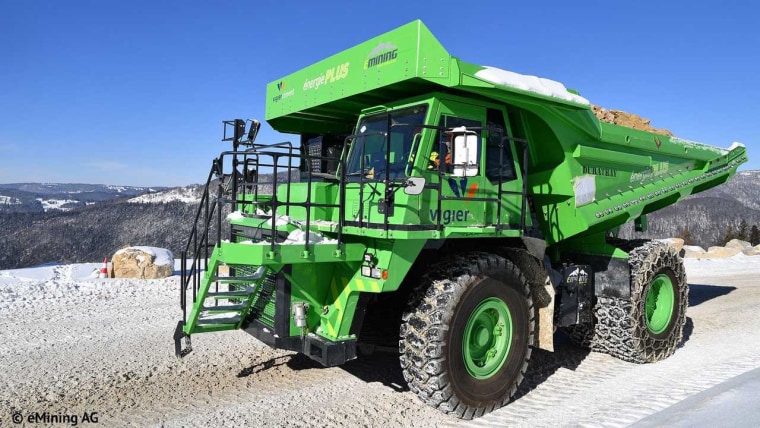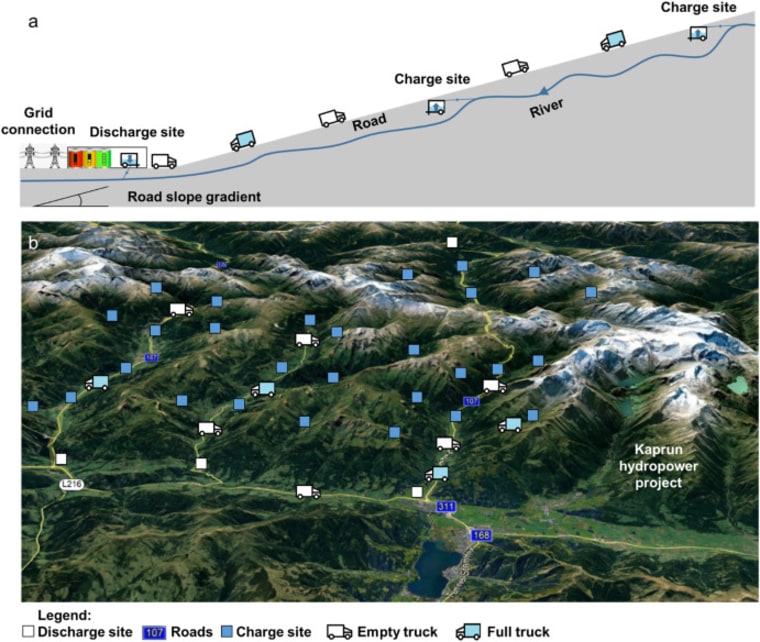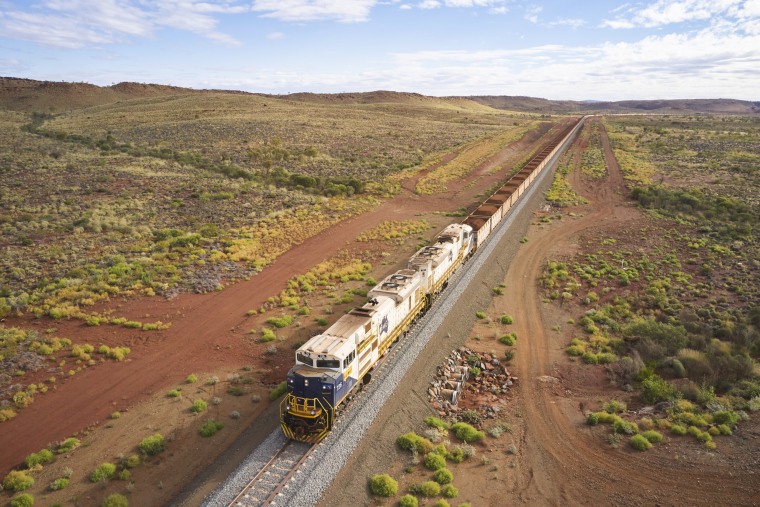Several new projects that aim to exploit the Earth’s gravity for power hint at how electric vehicles could unlock otherwise impossible ways of generating energy.
They include trains across the Australian Outback and dump trucks that need no gas. There’s even a proposal to haul water down a mountain to power the trip back up.
All three projects rely on a peculiarity of electric motors: they can generate electricity as well as use it. That means using the motor to slow an electric vehicle can recharge its batteries — a feature called “regenerative braking” in electric cars.
It turns out that under the right conditions — going far enough downhill at enough of an angle with a heavy load — electric vehicles can generate a useful amount of energy. They can make enough, in fact, to power their trip back up, and they often make electricity to spare — once they’ve dropped off their cargo.
“When you have a descent of 10 percent, from top to bottom, you never need to recharge,” said Roger Miauton, the chief executive of the Swiss electric vehicle firm eMining AG. “You generate enough energy going downhill as you need to get back up again.”
Miauton’s company manufactures the eDumper, a 65-ton dump truck that’s said to be the world’s largest electric vehicle. Its diesel engine and fuel tank have been replaced with electric motors, batteries and cooling machinery, and it’s now working at a quarry near Biel in Switzerland, hauling 70-ton loads of lime and rocks down a mountainside.

Thanks to the expense of the high-tech systems, an eDumper costs about twice as much as a diesel-powered truck. But it never needs any fuel — a savings of between 11,000 and 22,000 gallons of diesel a year, along with its carbon emissions — and it almost never needs recharging. Test drives show it generates about as much electricity going down as it uses going up. Miauton said the company is now making three more eDumpers for mines in Germany, and it has plans for even larger electric dump trucks.
The concept of making electricity on a downhill run will soon get an even bigger boost. The Australian mining company Fortescue, a major producer of iron ore, announced in March that it will build “Infinity Trains” to generate electricity while carrying loads of ore from mines in the Outback.
The company currently runs 16 trains in Western Australia driven by 54 locomotives that use a total of around 20 million gallons of diesel fuel every year. Each train has up to 244 cars. They can be almost two miles long and carry more than 37,000 tons of ore.
Fortescue chief executive Elizabeth Gaines said four routes from mines in the inland Pilbara region are sufficiently uphill of their final destination — Port Hedland on the northern coast — that they’re suitable for Infinity Trains. The company plans to have them working on all four routes before 2030 by developing the dynamic braking feature many locomotives already have to convert gravity into electricity, she said in an email. Some routes will generate even more energy than they need for the return trip, and the company will use the extra electricity elsewhere in its operations.
The most innovative proposal for making electricity from gravity may be electric truck hydropower. According to a study published in March, a fleet of electric trucks filled with water high in the mountains can generate electricity as they travel downhill on regular roads. The empty trucks can then drive back for more water, or be used elsewhere.
Study lead author Julian Hunt, a Brazil-based researcher with the International Institute for Applied Systems Analysis, said the system is about as cost-effective for generating electricity as wind, solar and regular hydropower.

To start with, electric truck hydropower can be much less expensive than the alternatives.
“You just need to buy electric trucks and be able to connect them to the grid — that’s the whole cost,” he said. “But for hydropower plants you need huge dams, tunnels, turbines, and lots of other different components that have very high investment costs.”
Depending on conditions, the water-carrying electric trucks could also be deployed to generate electricity from different stages of a mountain descent, or even from different rivers on different roads. “It’s very flexible, very modular,” he said.
The system won’t always be suitable — how much the drivers of the trucks are paid, for example, will affect the price of its electricity. But Hunt said it can be useful where regular hydropower storage in mountain lakes isn’t feasible and where rivers dry up in summer. It will also eliminate many of the environmental and social impacts caused by large hydropower plants, such as the need to flood large areas of land for reservoirs or to relocate communities, he said.
Christopher Knittel, a professor of energy economics who heads the Center Energy and Environmental Policy Research at the Massachusetts Institute of Technology, who wasn’t involved in the study, said he’s concerned that the costs of such a system might be greater than the estimates.
But “this is an interesting idea, for sure,” he said in an email. “Given how quickly things are moving and the need for new technologies, I am always excited to see thinking outside the box.”
